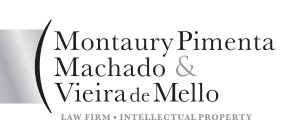Everybody wants to have their own patents granted, but few are pleased when their competitors' patents are granted as well. As Oscar Wilde once wisely said: "Own successes are encouraging, but failures of others shall also not be despised." In Brazil, as in most other countries, a problematic competitor's patent or patent application can be challenged.
This can be done in two ways:
- by filing a subsidy to the technical examination; or
- by filing a request for an administrative nullity procedure (PAN).
For a non-Brazilian applicant, what these terms stand for may be confusing. Their corresponding counterparts at the European Patent Office (EPO) are filing an observation by a third party and filing an opposition, respectively.
Subsidy to technical examination
The subsidy is established in article 31 of the IP Law as follows: "[u]pon publication of the patent application and up to the end of the examination, documents and information to support the examination may be filed by interested parties."
Thus, in practice, a party may file a subsidy at any time with the Brazilian patent and trademark office (INPI), even before examination is requested. However, a subsidy must be filed before the INPI has made a decision to grant or refuse the application. All of the party's arguments must be provided from the beginning, together with the filing of the subsidy, as well as copies of the prior art citations used. There is no official fee. The subsidy must include the author's name and address, but if the author wants to remain anonymous, that can also be arranged.
It should be observed that, in the same way as before the EPO, the third party that files the subsidy does not become a party to the proceedings and, in practice, has the same status as an observer. This means, among other things, that:
- the subsidy filer will not be contacted in any way by the INPI;
- the subsidy filer will not be summoned to anything;
- the filing of a subsidy will not be announced in the Official Patent Gazette (it is mentioned only in the file wrapper if it is searched via INPI's website); and
- the patent examiner is obliged to at least acknowledge the subsidy.
In fact, the examiner has good reason to study the subsidy because it often saves hours of searching work. Where the examiner thinks the arguments are pertinent, which happens quite frequently, they will use them in an official action to raise objections – for example, lack of novelty and/or lack of inventive step. It is up to the examiner to decide whether they want to mention the source of the arguments and, in fact, they often do not. The only way for the subsidy filer to find out the result of the examination proceedings after having filed a subsidy is to monitor the weekly Official Patent Gazette.
The most common objections in a subsidy are lack of novelty and/or lack of inventive step, based on the prior art documents used. These prior art documents are often of a kind that an INPI examiner would be unlikely to have found (eg, brochures, websites, exhibitions, invoices or doctoral theses). However, occasionally, the filing of a subsidy can be for an entirely different reason – for example, insufficient disclosure, lack of clarity or new subject matter (articles 24, 25 and 32 of the IP Law, respectively).
PAN
In fact, the examiner has good reason to study the subsidy because it often saves hours of searching work. Where the examiner thinks the arguments are pertinent, which happens quite frequently, they will use them in an official action to raise objections – for example, lack of novelty and/or lack of inventive step. It is up to the examiner to decide whether they want to mention the source of the arguments and, in fact, they often do not. The only way for the subsidy filer to find out the result of the examination proceedings after having filed a subsidy is to monitor the weekly Official Patent Gazette.
The most common objections in a subsidy are lack of novelty and/or lack of inventive step, based on the prior art documents used. These prior art documents are often of a kind that an INPI examiner would be unlikely to have found (eg, brochures, websites, exhibitions, invoices or doctoral theses). However, occasionally, the filing of a subsidy can be for an entirely different reason – for example, insufficient disclosure, lack of clarity or new subject matter (articles 24, 25 and 32 of the IP Law, respectively):
- the revocation of the patent;
- the maintenance of the patent; or
- the maintenance of the patent in amended form (ie, in a more limited form).
When the INPI makes a PAN decision, the administrative phase of the patent application is thereby concluded. This means that if the author of the PAN is not satisfied with the outcome, it may not appeal before the INPI, but must go to a federal court to request a reexamination. Similarly, if the patentee is discontent with the outcome, it can also go to a federal court.
In the same way as a subsidy, a PAN may be based on practically any legal requisite of the IP Law that, according to the PAN submitter, has not been met. It could even be based on any overlooked formality that is considered essential and indispensable for granting and that was omitted during prosecution. As an extreme example, a PAN could be based on the fact that a power of attorney is missing a signature. Moreover, a PAN can be based on grounds that are not accepted for an opposition by the EPO. The most important example of this is that the INPI accepts lack of clarity as a basis for a PAN, while the EPO does not.
Options for competitors
AWhen a competitor of an applicant or patentee has a particularly pertinent piece of prior art, it may act in one of three ways – namely:
- file a subsidy for the technical examination;
- file a PAN; or
- do nothing.
Quite a few people in the patent profession argue that a competitor should not "burn its gun powder" with a third-party observation, because if the patent is granted despite the observation, then there is no ammunition left for an opposition. At least for Brazil, that is not true, because the author of a subsidy can burn its gun powder once again in a PAN. The main reason for this is that there is nearly always a different examiner in the nullity proceedings and the new examiner will often have their own opinion, which may differ from that of the first examiner. Moreover, the examiner of the examination proceedings will often provide a reason as to why the prior art mentioned in the subsidy was not considered pertinent enough for a refusal of the application. Therefore, the filer of the subsidy can include counterarguments against that opinion in the PAN. This can even make the PAN stronger than if the party had not first filed a subsidy. Further, in PAN proceedings, parties can request an interview with the examiners, which is not possible for a subsidy.
With regard to doing nothing – this is a tactical game. A party may have a key novelty-destroying document that was not found by any patent office search worldwide (known as an "X document") – for example, an inventor's certificate from the old Soviet Union or one of the numerous Chinese documents that have no patent family members in other countries and for which the full text is available only in Chinese. If a party's competitor is granted a patent and sends the party a cease-and-desist letter for alleged infringement, the party can reveal its novelty-destroying document. This will certainly make the patentee think twice before initiating any costly legal court proceedings, which it would probably lose, and it will likely let the party continue.
This tactic has the advantage that all of the patentees' other competitors will likely respect the patent because they are unaware of the document, which remains a secret between the party and the patentee. However, if the prior art used is not a true X document, filing a subsidy and/or a PAN is definitely recommended instead. For instance, quite often a certain citation is of category X only because the granted claims are broad. If the patentee then restricts the scope during the PAN proceedings, the same document may suddenly become a category A – merely reflecting background art – and the patent would be upheld in an amended form. Generally speaking, the "pain threshold" of a restriction goes where the patentee's commercial product is no longer covered.
Comment
Subsidies and PANs are rare and could well be used to a larger extent because about half of them are indeed successful. According to the INPI, PANs are filed in less than 1% of all granted patents (compared with approximately 3% at the EPO), and subsidies even less. Unsurprisingly, a party's chances of success depend mainly on the pertinence of its prior art. The more pertinent a citation is, the easier it is to draft a successful subsidy or PAN. Further, if an opposition at the EPO is successful, the odds are high that a PAN in Brazil will be successful as well.
For further information on this topic please contact Magnus Aspeby at Montaury Pimenta, Machado & Vieira de Mello by telephone (+55 21 2524 0510) or email (This email address is being protected from spambots. You need JavaScript enabled to view it.
Source:
 Read article here (...patents in Brazil) | PDF Download
Read article here (...patents in Brazil) | PDF Download




